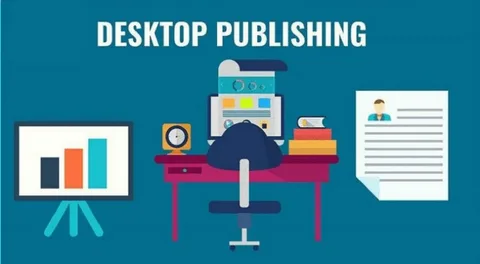Desktop Publishing: Empowering Creativity and Communication

Desktop publishing (DTP) has transformed the way we create and share printed and digital materials. From brochures and newsletters to books and magazines, DTP allows individuals and organizations to produce professional-quality documents with ease. This article explores the history, tools, applications, and impact of desktop publishing in today’s digital age.
What is Desktop Publishing?
Desktop publishing refers to the process of using computer software to create visual documents that combine text and graphics. Unlike traditional publishing, which often required specialized knowledge and expensive equipment, DTP enables anyone with a computer to design and produce materials for various purposes. It democratizes the publishing process, making it accessible to businesses, freelancers, educators, and hobbyists alike.
A Brief History of Desktop Publishing
The roots of desktop publishing can be traced back to the late 1970s and early 1980s when early personal computers and software began to emerge. Key milestones in the development of DTP include:
-
The Introduction of PageMaker (1985): Adobe PageMaker, developed by Aldus Corporation, was one of the first DTP applications. It allowed users to layout text and images on a page, setting the stage for a new era in publishing.
-
The Rise of Macintosh: The Macintosh computer, launched by Apple in 1984, was pivotal in popularizing desktop publishing. Its graphical user interface made it user-friendly, and it became the preferred platform for many designers and publishers.
-
The Development of Digital Fonts: The advent of digital fonts and typeface design tools allowed for greater creative expression in document design, further enhancing the appeal of DTP.
-
The Transition to Digital Media: With the growth of the internet in the 1990s and 2000s, desktop publishing expanded beyond print to include digital publications, such as e-books, online magazines, and websites.
Tools of Desktop Publishing
Desktop publishing relies on a variety of software applications and tools, including:
-
Layout Software: Programs like Adobe InDesign, QuarkXPress, and Microsoft Publisher are widely used for designing complex layouts, integrating text and images, and preparing documents for print or digital distribution.
-
Graphic Design Software: Tools such as Adobe Photoshop and Illustrator allow users to create and manipulate images, graphics, and illustrations to enhance their publications.
-
Word Processing Software: While not specifically DTP tools, applications like Microsoft Word and Google Docs can be used for simpler publishing tasks, especially for documents that do not require advanced design features.
-
Online Publishing Platforms: Services like Canva, Lucidpress, and Visme offer user-friendly interfaces for creating visually appealing documents and graphics without requiring extensive design skills.
Applications of Desktop Publishing
Desktop publishing is utilized in various fields and industries, including:
-
Marketing and Advertising: Businesses use DTP to create brochures, flyers, posters, and advertisements that promote their products and services.
-
Education: Educators and institutions employ desktop publishing to produce newsletters, reports, and instructional materials that enhance communication and engagement.
-
Publishing: Authors and independent publishers utilize DTP tools to layout books, magazines, and journals, allowing for greater control over the publishing process.
-
Event Planning: Event organizers create invitations, programs, and promotional materials using DTP to ensure a polished presentation.
The Impact of Desktop Publishing
The rise of desktop publishing has had a profound impact on the publishing industry and society at large:
-
Cost-Effective Production: DTP has significantly lowered the costs associated with producing printed materials, enabling small businesses and individuals to create professional publications without relying on traditional printing services.
-
Increased Accessibility: With user-friendly software available, more people can engage in publishing, leading to diverse voices and perspectives being represented in print and digital media.
-
Rapid Turnaround: The speed at which documents can be designed, edited, and published has increased dramatically, allowing for timely dissemination of information.
-
Environmental Considerations: Digital publishing reduces the reliance on paper, offering a more sustainable alternative to traditional publishing methods.
Conclusion
Desktop publishing has revolutionized the way we create and share information, empowering individuals and organizations to produce high-quality documents with ease. As technology continues to evolve, the tools and techniques of DTP will likely advance further, opening up new possibilities for creativity and communication. Whether for marketing, education, or personal projects, desktop publishing remains a vital component of the modern media landscape.
- Arts
- Business
- Computers
- Oyunlar
- Health
- Home
- Kids and Teens
- Money
- News
- Recreation
- Reference
- Regional
- Science
- Shopping
- Society
- Sports
- Бизнес
- Деньги
- Дом
- Досуг
- Здоровье
- Игры
- Искусство
- Источники информации
- Компьютеры
- Наука
- Новости и СМИ
- Общество
- Покупки
- Спорт
- Страны и регионы
- World


